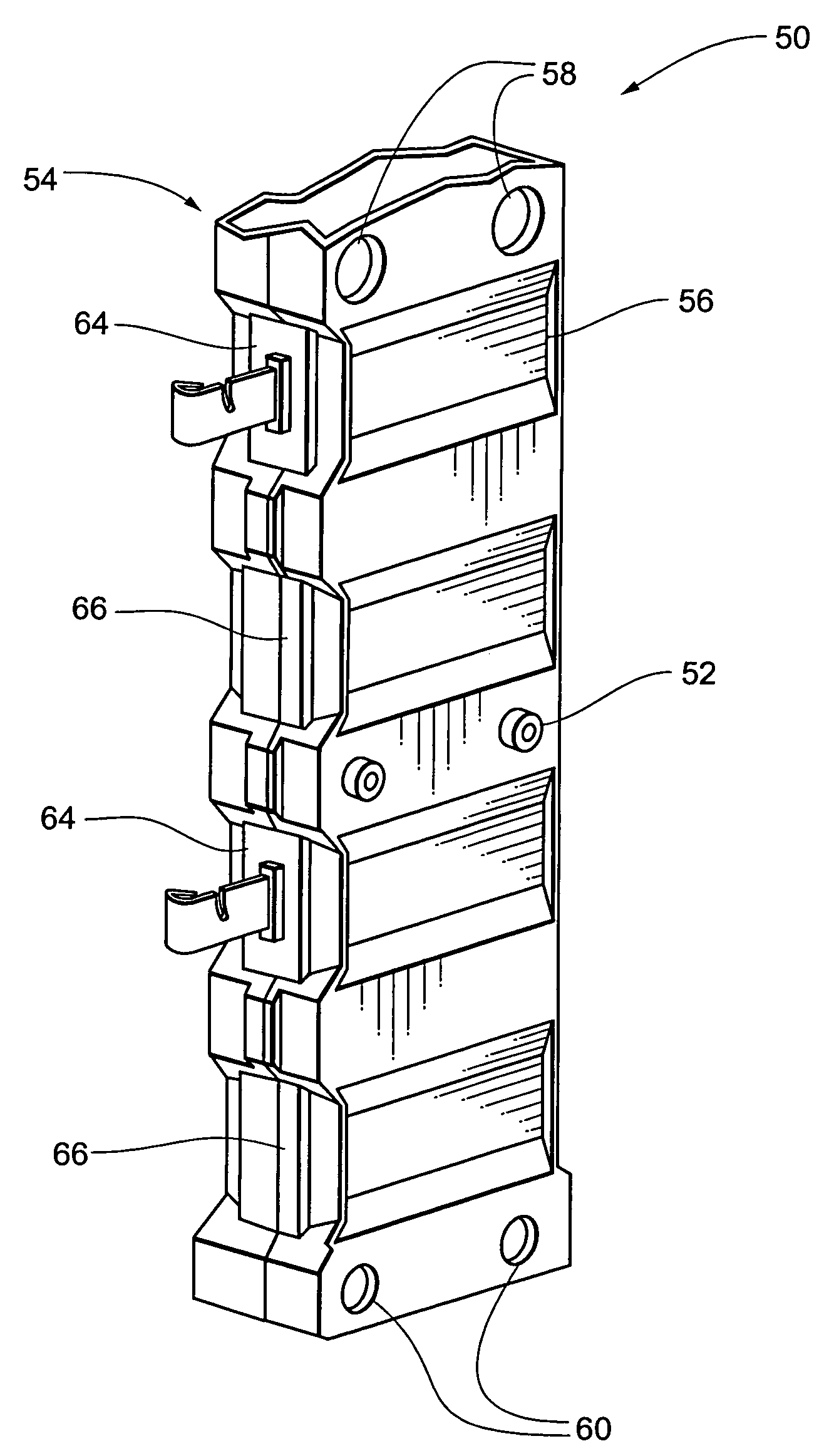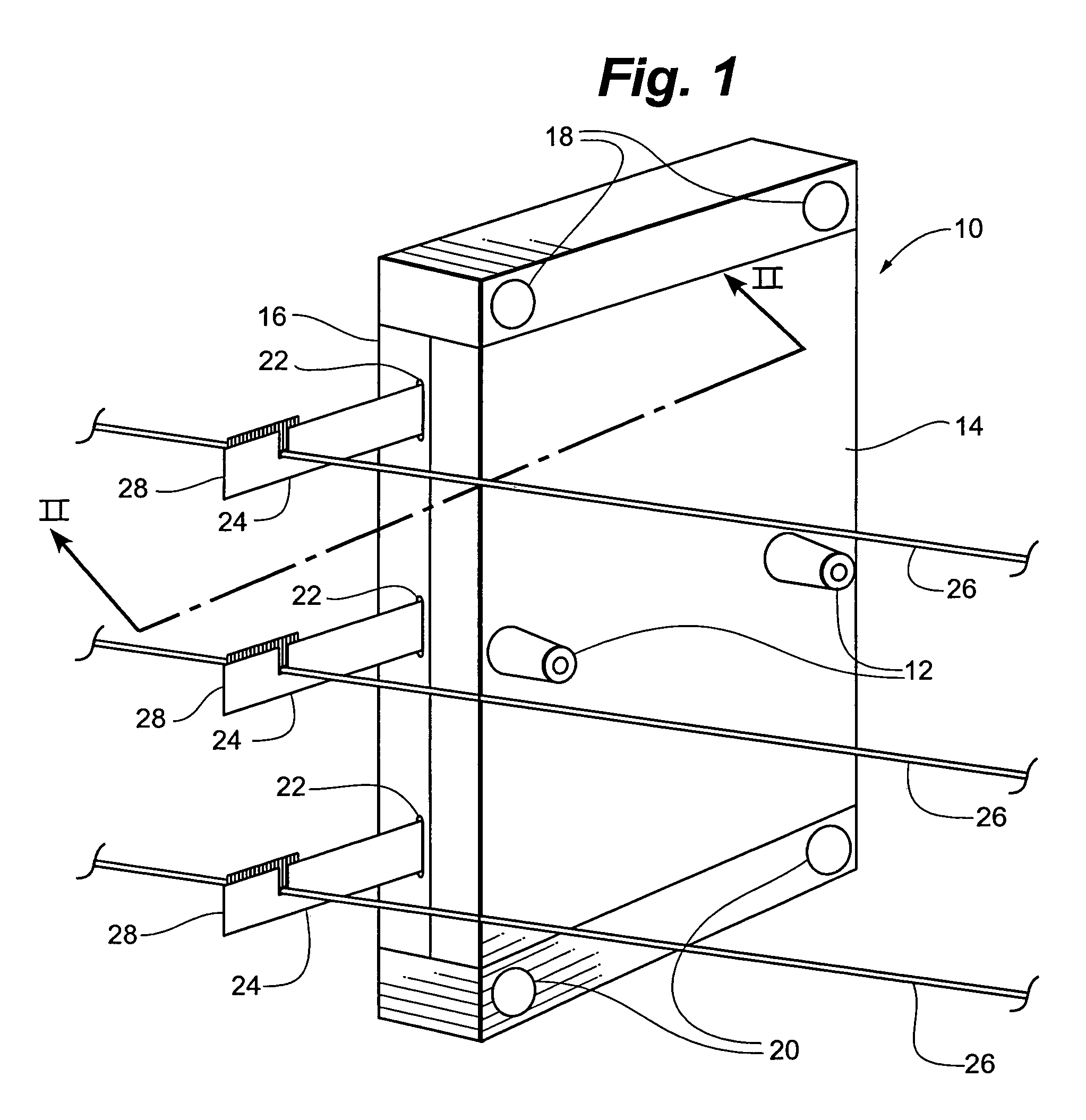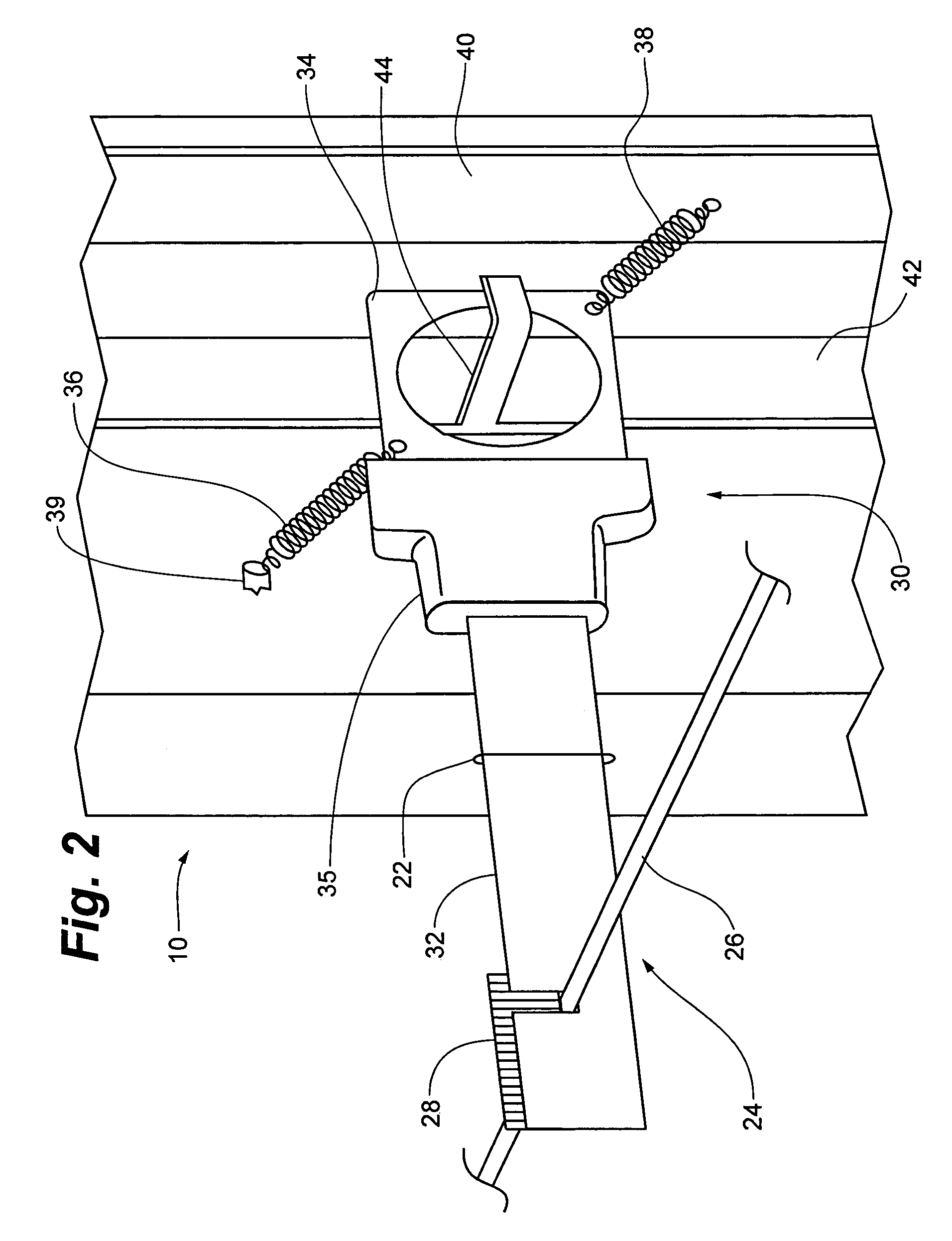Deflection sensing system
a detection system and deflection technology, applied in the field of physical perimeter barriers, intrusion detection and deterrence systems, can solve the problems of general low detection value of other systems, general failure to provide much deterrence value, and generally among the most expensive perimeter security systems availabl
- Summary
- Abstract
- Description
- Claims
- Application Information
AI Technical Summary
Benefits of technology
Problems solved by technology
Method used
Image
Examples
Embodiment Construction
[0018]The following detailed description is to be read with reference to the drawings, in which like elements in different figures have like reference numerals. The drawings, which are not necessarily to scale, depict selected embodiments, but are not intended to limit the scope of the invention. It will be understood that many of the specific details of the device incorporating the system illustrated in the drawings could be changed or modified by one of ordinary skill in the art without departing significantly from the spirit of the invention. For example, the deflection sensing system is designed for use on fences, however it may be used on other barriers as well.
[0019]The system of the invention has wide applicability in providing perimeter security. It can be used in a variety of applications where deterrence, detection, and / or delay are required to protect assets. Such applications include government, commercial, industrial, and private settings. Generally, the invention is ap...
PUM
 Login to View More
Login to View More Abstract
Description
Claims
Application Information
 Login to View More
Login to View More - R&D
- Intellectual Property
- Life Sciences
- Materials
- Tech Scout
- Unparalleled Data Quality
- Higher Quality Content
- 60% Fewer Hallucinations
Browse by: Latest US Patents, China's latest patents, Technical Efficacy Thesaurus, Application Domain, Technology Topic, Popular Technical Reports.
© 2025 PatSnap. All rights reserved.Legal|Privacy policy|Modern Slavery Act Transparency Statement|Sitemap|About US| Contact US: help@patsnap.com



